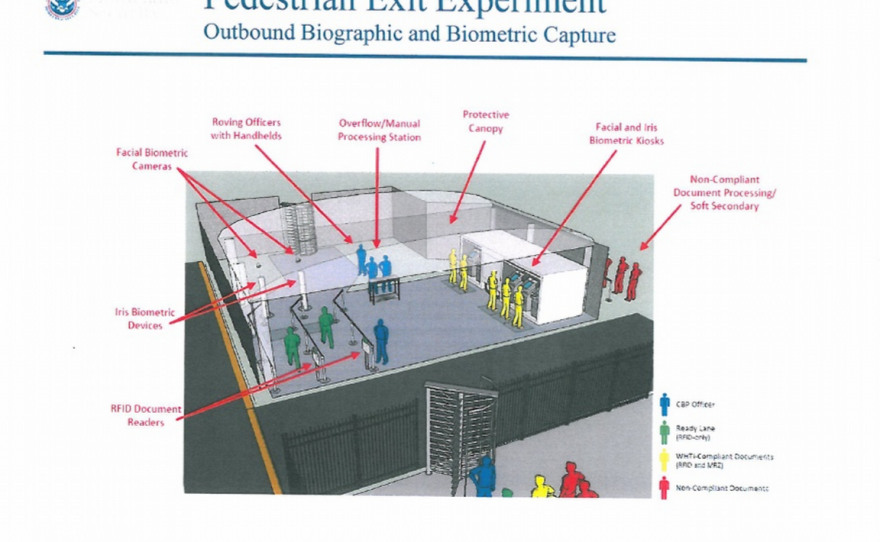The next time you walk across the Mexican border, an agent might ask to scan your face.
In a pilot program rolling out this spring and summer, Customs and Border Protection will be testing biometric technology at the Otay Mesa pedestrian crossing. Face and iris scanning kiosks will capture biometric data on non-U.S. citizens walking across the border.
According to slides from a presentation on the agency's plans for biometrics, the program is designed to "test the viability of facial and iris image capture in an outdoor land exit environment."
The presentation cites potential benefits of the program, including "an additional level of security at our southern land border to combat national security and public safety threats."

But American Civil Liberties Union legislative counsel Arjun Sethi, who obtained the presentation slides from a Customs and Border Protection meeting last week, says biometrics could pose a threat to everyone's privacy.
"If this technology is to be used, it must be governed by strict rules concerning how this data is collected, how it's retained, and who it's shared with," said Sethi. "Any pilot program of this nature should be subject to an independent review and/or audit."
Sethi also worries that without proper checks, face scanning could encourage racial profiling at the border. "It could allow us to be monitored in unprecedented ways," he said.
A "local biometric repository" will be created for the project, but the presentation offers scant information on how data will be managed.
Biometric testing at the Mexican border will currently be limited to the Otay Mesa pedestrian crossing. But Customs and Border Protection is launching similar programs at other points of entry. Washington, D.C.'s Dulles airport was recently outfitted with facial recognition software, as reported by the tech news site Motherboard.
Customs and Border Protection officials could not yet be reached for comment.







